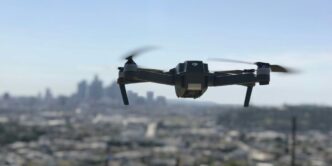The Small UAV Market, valued at USD 0.59 billion in 2022, is set to experience significant growth over the coming years, projected to reach USD 2.74 billion by 2031 at a robust CAGR of 18.6% during the forecast period (2024-2031). The demand for small unmanned aerial vehicles (UAVs) is expanding rapidly due to their cost-effectiveness, versatility, and advanced technological capabilities, such as enhanced battery life, flight control, and AI integration.
Download a detailed overview: https://www.skyquestt.com/sample-request/small-uav-market
Market Drivers and Trends
- Increasing Demand for Aerial Data Collection and Surveillance Small UAVs provide an efficient solution for real-time data collection, imagery, and video surveillance. Industries such as agriculture, construction, and infrastructure rely on UAVs to gather accurate and timely information, fueling their demand.
- Advancements in UAV Technologies Technological improvements in flight systems, miniaturization, and AI-based analytics have propelled the market. UAVs are now equipped with sophisticated sensors, advanced imaging systems, and autonomous capabilities, offering enhanced situational awareness across various industries.
- Evolving Regulatory Landscape The regulatory environment for UAVs has become more favorable, with governments implementing guidelines for safe and responsible drone use. This has encouraged the adoption of UAVs in commercial sectors, enhancing market growth.
- Competitive Landscape The market is fiercely competitive, with key players like AeroVironment Inc, Lockheed Martin Corporation, and DJI Technology dominating the space. These companies continuously invest in product development, technological innovations, and strategic partnerships to gain an edge.
Market Segmentation
By Type
- Mini UAVs: This segment holds the largest market share due to its balance between payload capacity and maneuverability. Mini UAVs are widely used for applications such as aerial photography, surveillance, and infrastructure inspection.
- Nano UAVs: Nano UAVs, known for their compact size and agility, are experiencing the fastest growth. These are ideal for indoor operations and close-quarters inspections in industries like construction, oil and gas, and security.
- Micro UAVs: While smaller, micro UAVs cater to niche applications that require precision in confined spaces.
By Application
- Military and Law Enforcement: This segment dominates the market, with UAVs being critical for border surveillance, reconnaissance, and intelligence gathering. Government agencies heavily invest in UAV technology for enhanced operational effectiveness.
- Civil and Commercial: The civil and commercial sector is the fastest-growing, driven by expanding applications in filmmaking, real estate, agriculture, and infrastructure. The affordability and regulatory support for drones in commercial airspace further fuel this growth.
Regional Insights
- Asia Pacific Asia Pacific is the largest regional market for small UAVs, driven by increasing defense budgets and security concerns. Countries like China and India lead in both military applications and commercial drone deployment, particularly in agriculture and media.
- North America North America is expected to be the fastest-growing region due to favorable regulations, strong manufacturing capabilities, and adoption in commercial applications like aerial photography and film production. Technological advancements and innovative use cases in sectors like infrastructure inspection further contribute to growth.
Request Free Customization of this report: https://www.skyquestt.com/speak-with-analyst/small-uav-market
Key Market Dynamics
Market Drivers
- Expanding applications of UAVs in diverse sectors such as agriculture, infrastructure, security, and entertainment.
- Increasing use of UAVs for real-time data collection and surveillance, improving decision-making and operational efficiency.
Market Restraints
- Regulatory challenges remain a barrier to market growth, especially concerning privacy and safety regulations.
- The high cost of advanced UAVs and operational constraints in certain regions may hinder broader adoption.
Market Trends
- Integration of advanced tracking and surveillance technologies is becoming a key market trend. Enhanced sensors, real-time data processing, and image recognition software are boosting UAV capabilities, especially for military and law enforcement applications.
Competitive Landscape
The global small UAV market is highly competitive, with several key players striving to innovate and capture market share. Some of the leading companies include:
- AeroVironment Inc (US)
- SZ DJI Technology Co., Ltd. (China)
- Teledyne Technologies Incorporated (US)
- Thales Group (France)
- Lockheed Martin Corporation (US)
- Parrot SA (France)
- FLIR Systems, Inc. (US)
- Yuneec International Co. Ltd. (China)
- Textron Inc. (US)
- Israel Aerospace Industries Ltd. (Israel)
These companies are focusing on product performance, cost-effectiveness, and regulatory compliance to stay competitive. Investments in research and development, geographic expansion, and strategic acquisitions are crucial to gaining a competitive edge.
Recent Developments
- In September 2023, the U.S. launched the Replicator initiative to counter China’s military advantage by deploying numerous smart drones.
- In February 2024, High Eye won a tender with the Netherlands Ministry of Defense for its Airboxer VTOL UAV, marking a significant step in UAV integration for both European and global operations.
Conclusion
The Global Small UAV Market is on a trajectory of rapid growth, driven by technological advancements, expanding applications, and favorable regulatory frameworks. With innovations in drone capabilities and increasing adoption across military, civil, and commercial sectors, the market is set to reach USD 2.74 billion by 2031. Key players are focusing on product differentiation and strategic partnerships to maintain a competitive position in this dynamic and fast-evolving market.













